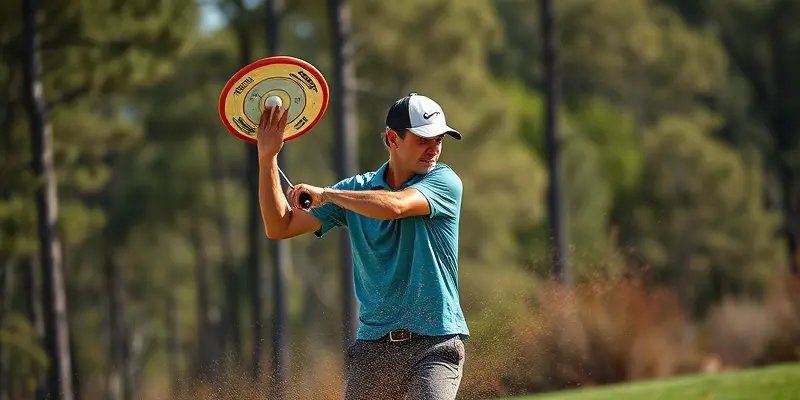By the GymPulse Club Team — Led by our 10+ year sports wellness expert
Why Disc Golfers (of All Levels) Need to Rethink Recovery
Disc golf is soaring in popularity. It’s fun, social, and a fantastic way to stay active—from parks to pro circuits, millions are hooked. Yet, it surprises many just how tough disc golf can be on the body. Those powerful throws, twisting motions, and long walks? They’re a recipe for progress, but also for soft tissue strains, elbows that ache, and shoulders that sometimes say “enough.”
Whether you’re new to the sport, a weekend warrior, or pushing the competitive scene, injury prevention and smart recovery are your secret weapons for staying in the game.
The Most Common Disc Golf Injuries—and Why They Happen
Think disc golf is “low impact”? It is, but it’s also a test of mobility, coordination, and repetitive motion.
- Elbow pain: Often from overusing the forehand, or “arming” the throw instead of involving the body.
- Shoulder injuries: Rotator cuff stress and labrum strains are common due to improper reach-back or follow-through.
- Back issues: Over-rotating or neglecting hip engagement stresses lumbar muscles.
- Knee & ankle twists: Usually from rushed footwork or unpredictable terrain.
Why do these occur?
Poor throwing mechanics, skipping warm-ups, and pushing too hard too soon are the usual suspects. Even advanced players slip up—repetition without good form is a fast track to trouble.
Foundational Habits: Prevent Injuries Before They Happen
Start with Dynamic Warm-Ups
Imagine driving a car in winter—you wouldn’t slam the gas before warming up the engine, right? Muscles work the same way.
Essential moves before you tee off:
- Arm circles and trunk rotations
- Walking lunges or high knees
- Gentle wrist and ankle mobility drills
Spend 5-10 minutes; your future self will thank you.
Master Technique (and Keep Checking It!)
Most disc golf injuries are “technique injuries.” Filming your throws with a smartphone, watching pro tutorials, or even working with a coach can reveal simple fixes.
Look for:
- Are you “arming” instead of using your hips and core?
- Is your follow-through smooth and balanced?
Tip: Gradually build intensity. Start with 70% power throws, then increase as you get comfortable.
Don’t Skip the Slow Build
It’s tempting to keep throwing “just one more.” But recovery is earned with patience. If you’re new, limit strong throws and focus on movement quality. Increase your sessions gradually over weeks, not days.
Nutrition and Recovery Tools: Your Body’s Repair Kit
Eat to Heal
Protein is your muscle’s best friend—especially after those first hilly rounds.
Include:
- Lean meat, fish, tofu, or legumes in meals
- Anti-inflammatory powerhouses: leafy greens, berries, walnuts, and fatty fish
- Hydrate! Even mild dehydration slows muscle repair. For additional antioxidant support, consider incorporating antioxidants in sports nutrition to help with injury prevention and recovery.
Smart Tools for Sore Muscles
- Foam rollers/massage guns: Break up tension after play, promote blood flow, and speed soreness recovery.
- Compression sleeves: Support for elbows/knees, especially if you’re bouncing back from tweaks.
- Resistance bands: Perfect for gentle rehab and keeping key joints mobile.
The Psychology of Recovery: Stay Motivated, Stay Disciplined
Recovery isn’t just a physical task—it’s a mental one.
- Set mini-goals: Celebrate small wins, like improved flexibility or pain-free motions.
- Visualize good form during downtime—mental reps matter. To enhance this technique, check out our guide on visualization for healing.
- Routine is resilience: Even if you’re sidelined, maintain a modified fitness routine to keep the habit alive.
- Seek help early: Persistent pain? Don’t tough it out. A physical therapist or sports chiropractor can keep a minor setback from becoming chronic.
Key Takeaways: Be Proactive, Play Longer
- Disc golf is demanding—treat your recovery and injury prevention as part of your training, not an afterthought.
- Prioritize dynamic warm-ups, focus on form, eat to repair, and use the right tools.
- Don’t overlook mental strategies and the value of professional advice.
Invest in your body, and disc golf will give back for years. Ready to play stronger, smarter, and safer? The GymPulse community is here for every step—and every throw.
Authored by the GymPulse Club Team, guided by decades of real-world fitness and injury prevention expertise. For personalized guidance, explore our member forums or connect with a certified movement specialist today.

